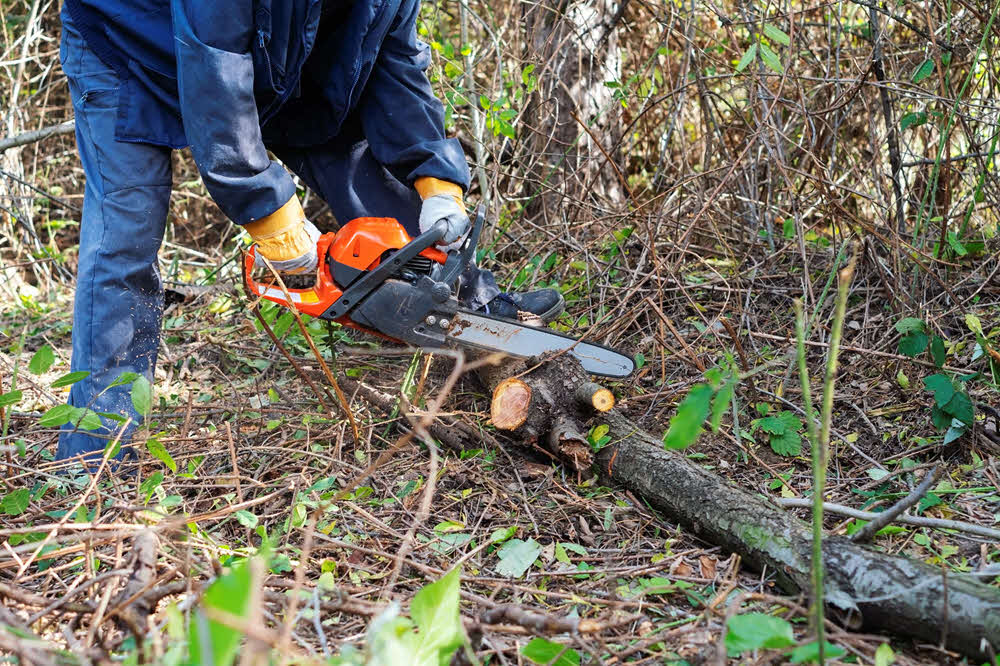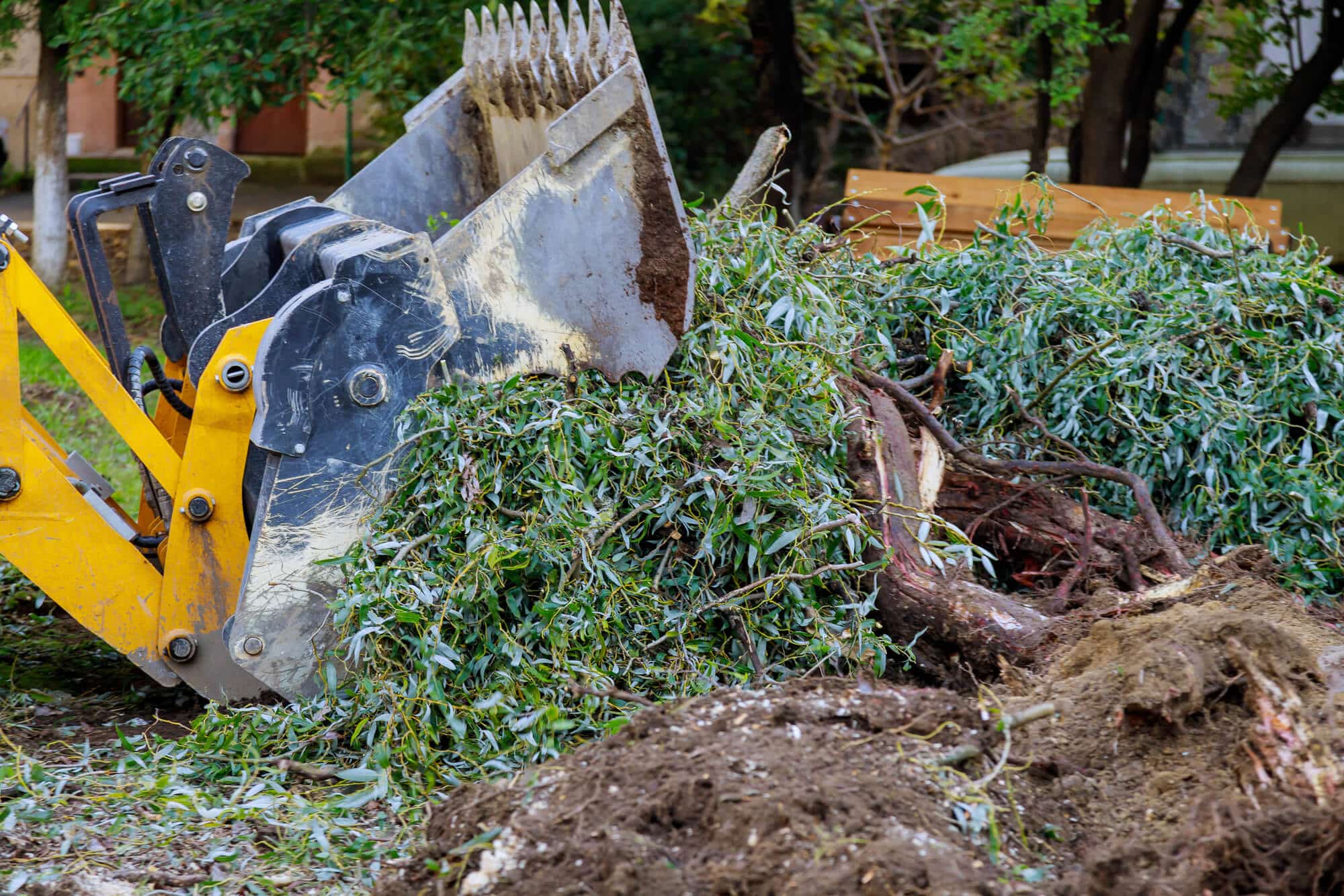Land Clearing Servicesin Grosse Pointe Farms MI
Land Clearing Expertise to Ensure a Smooth Construction Process
We Are Locally Owned & Operated For Over 37 Years
Contact Us Today!
We Serve Businesses In And Around The Following Cities:
About Land Clearing Services
Land Clearing Services: A Comprehensive Guide for Commercial Properties in Grosse Pointe Farms
The development of commercial properties begins with a critical procedure: land clearing. This process, often underestimated, is a cornerstone for any construction project’s success. To maintain a seamless progression through each development stage, choosing top-notch land clearing services, such as those provided by D&J Contracting, is crucial. This guide dives deep into understanding the importance, benefits and real-world applications of land clearing services in Grosse Pointe Farms.
Understanding Land Clearing Services
Land clearing refers to the process of removing trees, shrubs, boulders, and other obstructions from a plot of land to pave the way for construction or landscaping needs. Professional land clearing companies use a range of specialized machines for the job, from bobcats and skid steers to mini excavators. The extent of the service depends on the project, from clearing a lot for a house, to preparing land for a commercial building, or even clearing acres of land for a larger development project.
Land clearing companies like D&J Contracting also engage in grading and land leveling. This process ensures a stable and even surface to prevent future structural issues. Moreover, it contributes to efficient water drainage, thus reducing the risk of flooding.
Benefits of Professional Land Clearing Services
Contracting professional land clearing services offers several key benefits. Among these, safety is at the forefront. Land clearing and tree removal entail substantial risks such as accidents, property damage, and personal injury. Seasoned professionals employ the necessary know-how and safety measures to mitigate these risks.
Another significant benefit is time efficiency. Clearing land for construction or for building a house requires specialized machinery and industry knowledge. Consequently, teams like D&J Contracting can accomplish the task in a fraction of the time that a less experienced service might take.
Lastly, compliance with local and environmental codes is a crucial aspect of land clearing. Non-compliance may result in fines or project delays. Professional land clearing companies are well versed in these regulations and incorporate them into their operational processes.
Land Clearing and Its Real-world Applications
Land clearing services are indispensable across various commercial sectors. Agricultural enterprises, for example, may require land clearing and grading to set up new fields, drainage corridors, or irrigation systems. Construction firms often seek skilled land clearing contractors to create suitable building lots, remove debris, or lay down a driveway. Clearing land for horses is yet another application and a worthwhile investment for horse breeders and racecourse owners.
Property developers also utilize these services in residential areas, clearing a plot of land or clearing a lot for a house. With this, rough, undeveloped land transforms into desirable lots for prospective homeowners. Additionally, land clearing companies are sought for land clearance near me, especially in fire-prone regions, to establish defensible space and thus help in fire prevention.
It is worth noting that D&J Contracting affords practical, affordable land clearing solutions across these contexts, appealing to a comprehensive range of commercial and residential clients. Their machinery selection, including skid steers and mini excavators, efficiently handles different land clearing requirements, from clearing thick vegetation with a bush hog to precisely grading a plot ready for construction.
Finding The Right Land Clearing Service
Several factors contribute to selecting the ideal land clearing service. A company’s track record, equipment, understanding of local regulations, and customer reviews all play a role. Companies, like D&J Contracting, with years of experience and a positive reputation, assure quality service and reliability, effectively addressing your land clearing needs.
In conclusion, the role of a land clearing service in the successful development of commercial properties is paramount. By employing a professional team like D&J Contracting, developers ensure that their projects kick off with a thoroughly prepared and compliant piece of land. To fully benefit from land clearing services, it is necessary to understand the process, its applications, and the fundamental role this service plays in construction and broader development projects. So, whether you’re a property developer, construction company, or agricultural enterprise, you now possess an informed understanding of land clearing’s value. As such, regardless of whether you are clearing land for development, construction, or agriculture, give due diligence to this critical first stage, and consider partnering with experienced professionals like D&J Contracting for a smooth and rewarding project start.
Land Clearing Services Gallery


Call Us Today to receive your Free Quote for
Land Clearing Services in Grosse Pointe Farms
Serving: Grosse Pointe Farms, Michigan

About Grosse Pointe Farms, Michigan
The area that would become Grosse Pointe Farms was originally incorporated as the Village of Grosse Pointe in 1879. By 1889, the village extended from land just above Provencal Road in the northeast to Cadieux Road in the west. In 1893, the portion of the village east of Fisher Road broke off and incorporated as the Village of Grosse Pointe Farms after a dispute over the location of a tavern. It was not until 1949, however, that the village incorporated as a city.
The U.S. Postal Service operates the Grosse Pointe Post office in Grosse Pointe Farms.
According to the United States Census Bureau, the city has a total area of 12.32 square miles (31.91 km), of which 2.75 square miles (7.12 km) is land and 9.57 square miles (24.79 km) is water. The water is part of Lake St. Clair.
The Farms has a more varied topography and streetscape than the other southern Grosse Pointes. While Grosse Pointe and Grosse Pointe Park are built on a standard street grid and are basically flat, Grosse Pointe Farms is partially built on the same grid flowing out of Detroit, but also features districts with irregular, curving street paths. A low but noticeable ridge runs through the center of the city. The Farms also contains the “point” in Grosse Pointe, where, just east of the Grosse Pointe War Memorial, there is a large bend in the lakeshore, such that those on the shoreline face east, instead of south, as they do when on the shoreline of neighboring Grosse Pointe, closer to the entrance of the Detroit River.
The cityscape varies widely, with large sections of old homes ranging from bungalows to mansions, and a few newer sections with ranch houses or luxury homes built on subdivided estates. The Farms has a downtown on Kercheval Avenue combining historic buildings with newer, neo-traditional storefronts.
| Census | Pop. | Note | %± |
|---|---|---|---|
| 1900 | 817 | — | |
| 1910 | 862 | 5.5% | |
| 1920 | 1,649 | 91.3% | |
| 1930 | 3,533 | 114.3% | |
| 1940 | 7,217 | 104.3% | |
| 1950 | 9,410 | 30.4% | |
| 1960 | 12,172 | 29.4% | |
| 1970 | 11,701 | −3.9% | |
| 1980 | 10,551 | −9.8% | |
| 1990 | 10,092 | −4.4% | |
| 2000 | 9,764 | −3.3% | |
| 2010 | 9,479 | −2.9% | |
| 2020 | 10,148 | 7.1% | |
| U.S. Decennial Census | |||
As of the census of 2010, there were 9,479 people, 3,718 households, and 2,770 families residing in the city. The population density was 3,446.9 inhabitants per square mile (1,330.9/km). There were 3,952 housing units at an average density of 1,437.1 per square mile (554.9/km). The racial makeup of the city was 95.4% White, 1.8% African American, 0.2% Native American, 1.3% Asian, 0.4% from other races, and 1.0% from two or more races. Hispanic or Latino of any race were 2.0% of the population.
There were 3,718 households, of which 33.7% had children under the age of 18 living with them, 66.0% were married couples living together, 6.2% had a female householder with no husband present, 2.3% had a male householder with no wife present, and 25.5% were non-families. 23.0% of all households were made up of individuals, and 12.3% had someone living alone who was 65 years of age or older. The average household size was 2.55 and the average family size was 3.02.
The median age in the city was 45.1 years. 25.8% of residents were under the age of 18; 4.8% were between the ages of 18 and 24; 19.5% were from 25 to 44; 32.6% were from 45 to 64; and 17.5% were 65 years of age or older. The gender makeup of the city was 48.8% male and 51.2% female.
At the 2000 census, there were 9,764 people, 3,804 households, and 2,868 families residing in the city. The population density was 3,618.8 inhabitants per square mile (1,397.2/km). There were 3,937 housing units at an average density of 1,459.2 per square mile (563.4/km). The racial makeup of the city was 97.58% White, 0.65% African American, 0.11% Native American, 1.13% Asian, 0.11% from other races, and 0.42% from two or more races. Hispanic or Latino of any race were 1.11% of the population.
There were 3,804 households, of which 34.3% had children under the age of 18 living with them, 67.8% were married couples living together, 6.1% had a female householder with no husband present, and 24.6% were non-families. 22.3% of all households were made up of individuals, and 12.0% had someone living alone who was 65 years of age or older. The average household size was 2.57 and the average family size was 3.03.
Age distribution was 26.5% under the age of 18, 3.6% from 18 to 24, 23.4% from 25 to 44, 28.6% from 45 to 64, and 17.9% who were 65 years of age or older. The median age was 43 years. For every 100 females, there were 90.6 males. For every 100 females age 18 and over, there were 87.5 males.
The median household income was $100,153, and the median family income was $109,264. Males had a median income of $87,108 versus $53,241 for females. The per capita income for the city was $54,846. About 1.5% of families and 2.1% of the population were below the poverty line, including 3.1% of those under age 18 and 1.4% of those age 65 or over.
The community is served by Grosse Pointe Public Schools (GPPSS). Public schools within Grosse Pointe Farms include Père Gabriel Richard Elementary School, Kerby Elementary School, Brownell Middle School, and Grosse Pointe South High School. Along with Richard and Kerby, Monteith Elementary School in Grosse Pointe Woods serves a section of the city. All residents are zoned to Brownell. Almost all residents are zoned to GPS High, while those in a northwest section are zoned to Grosse Pointe North High School in Grosse Pointe Woods.
Saint Paul Catholic School is in Grosse Pointe Farms.
The Grosse Pointe Public Library operates the Central Branch in Grosse Pointe Farms.
Call Us Today to receive your Free Quote for
Land Clearing Services in Grosse Pointe Farms
Related Services in Grosse Pointe Farms, Michigan
We Serve Businesses In The Following Zip Codes:
48007, 48015, 48021, 48026, 48035, 48036, 48038, 48042, 48043, 48044, 48045, 48046, 48047, 48048, 48050, 48051, 48066, 48071, 48080, 48081, 48082, 48083, 48084, 48085, 48088, 48089, 48090, 48091, 48092, 48093, 48098, 48099, 48225, 48230, 48236, 48310, 48311, 48312, 48313, 48314, 48315, 48316, 48317, 48318, 48397